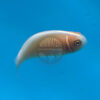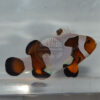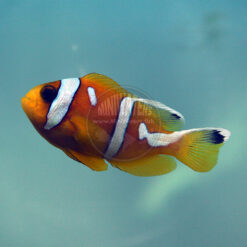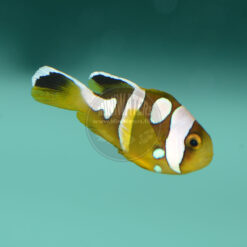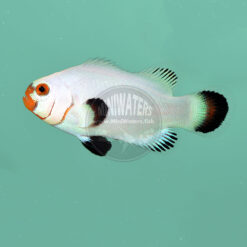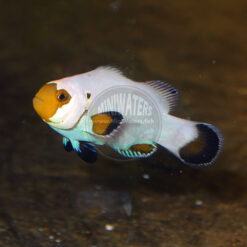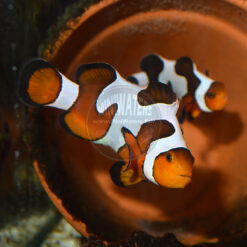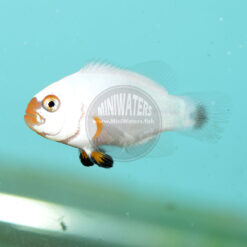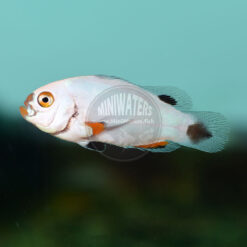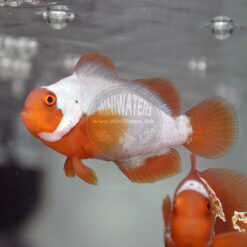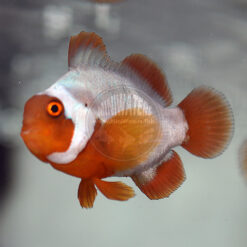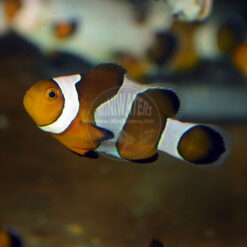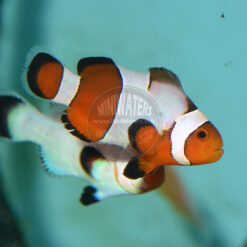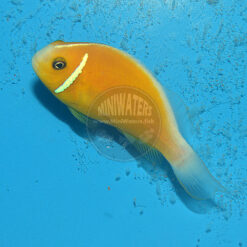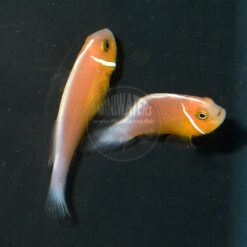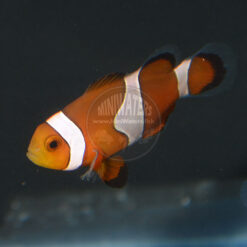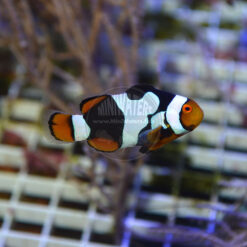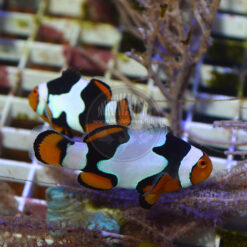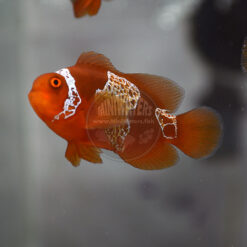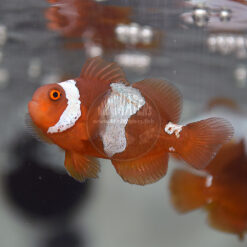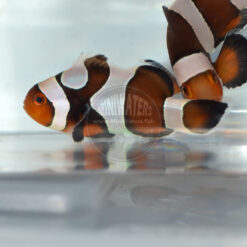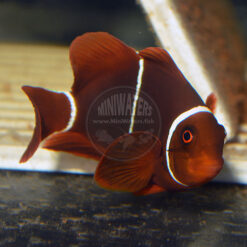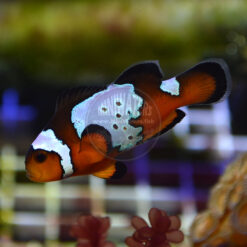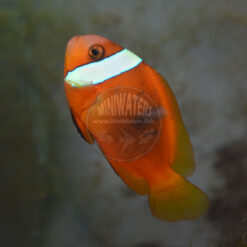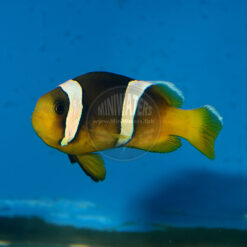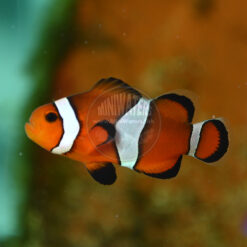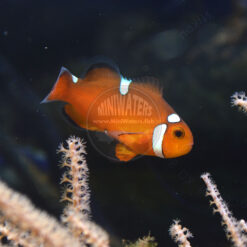Amphiprion percula “Onyx”
$99.00
Onyx Perculas have been around for well over a decade, denoted by solid black flanks on fish that generally have an orange face and fins. At its heart, it’s a naturally occurring phenotype (outward appearance) within wild populations of Amphiprion percula. Not all Onyx Perculas are created equal, so lineage and source do matter. Learn more below. Wild-lineage fish that haven’t been selectively bred (eg. F1 offspring) tend to bar up slowly, are prone to misbarring, and may or may not ever develop the trademark black flanks of the variety (it seems to be an epigenetically-influenced trait, where offspring in certain tanks will turn black, while siblings in other tanks will fail to do so).
Description
Onyx Perculas have been around for well over a decade, denoted by solid black flanks on fish that generally have an orange face and fins. At its heart, it’s a naturally occurring phenotype (outward appearance) within wild populations of Amphiprion percula. Not all Onyx Perculas are created equal, so lineage and source do matter.
Wild-lineage fish that haven’t been selectively bred (eg. F1 offspring) tend to bar up slowly, are prone to misbarring, and may or may not ever develop the trademark black flanks of the variety (it seems to be an epigenetically-influenced trait, where offspring in certain tanks will turn black, while siblings in other tanks will fail to do so). These types of Onyx Percs represent a bit of a gamble when purchased as juveniles…you don’t know how they’re going to turn out upon maturity.
On the flipside, there are lines of captive-bred “Onyx” Perculas that are heavily-selectively bred. The most in-demand type tends to be the C-Quest line, which stems back to Bill Addison & C-Quest hatchery; it was Bill who first dubbed this color form “Onyx”. Rod Buehler (of Rod’s Food fame) is perhaps best credited for furthering demand for this color form via his “Rod’s Onyx” which was simply a continuation of the C-Quest line. As this line of breeding has continued, breeders have chosen fish that bar up quickly and are more apt to show black, particularly at a young age; it has gotten to the point now where some lines ultimately color up completely black upon maturity, leaving only the face or even just the lips as orange. I will always have lingering suspicions, however, that there might have been some Ocellaris blood mixed into this line, although Bill was adamant that there never was. For people looking for fish that are more likely to “color up”, or fish that are already showing the “Onyx” coloration, these selectively-bred lines are the way to go. I would not suggest using these lines for any conservation-minded breeding projects.
All of this said, “Onyx” is not a single mutant gene. Based on how the fish breeders, it most likely it represents the combinations of multiple related genes. There is a chance, with C-Quest lineage fish that we offer from Booyah’s Reef, that they could carry a low-expression Addison’s Quest gene.
While I’ve gone off on this tremendous tangent about genetics and origins, at the end of the day, this is just another color form of Amphiprion percula.
Additional information
| Scientific Name | Amphiprion percula |
|---|---|
| Captive-Bred | |
| Breeder | Booyah's Reef, MiniWaters |
| Sizes Available | Small |
| FishBase Link | http://fishbase.org/summary/SpeciesSummary.php?ID=9209 |
| Wholesale Available | Yes |
| Variation | 3 Stripe, Misbar |
Related products
Clownfish


